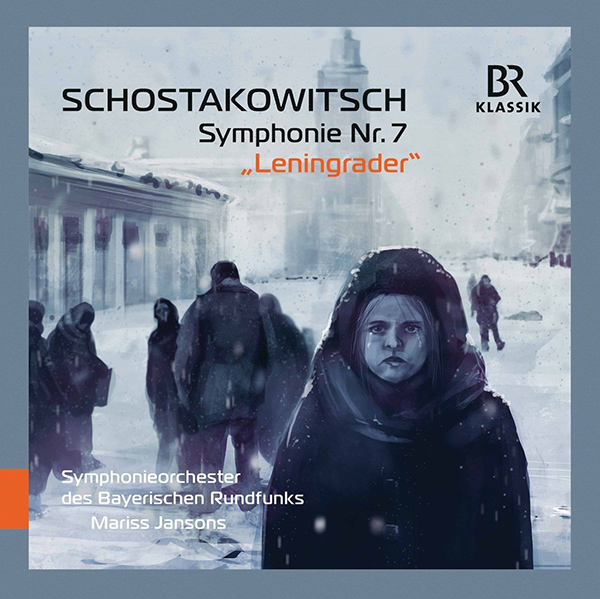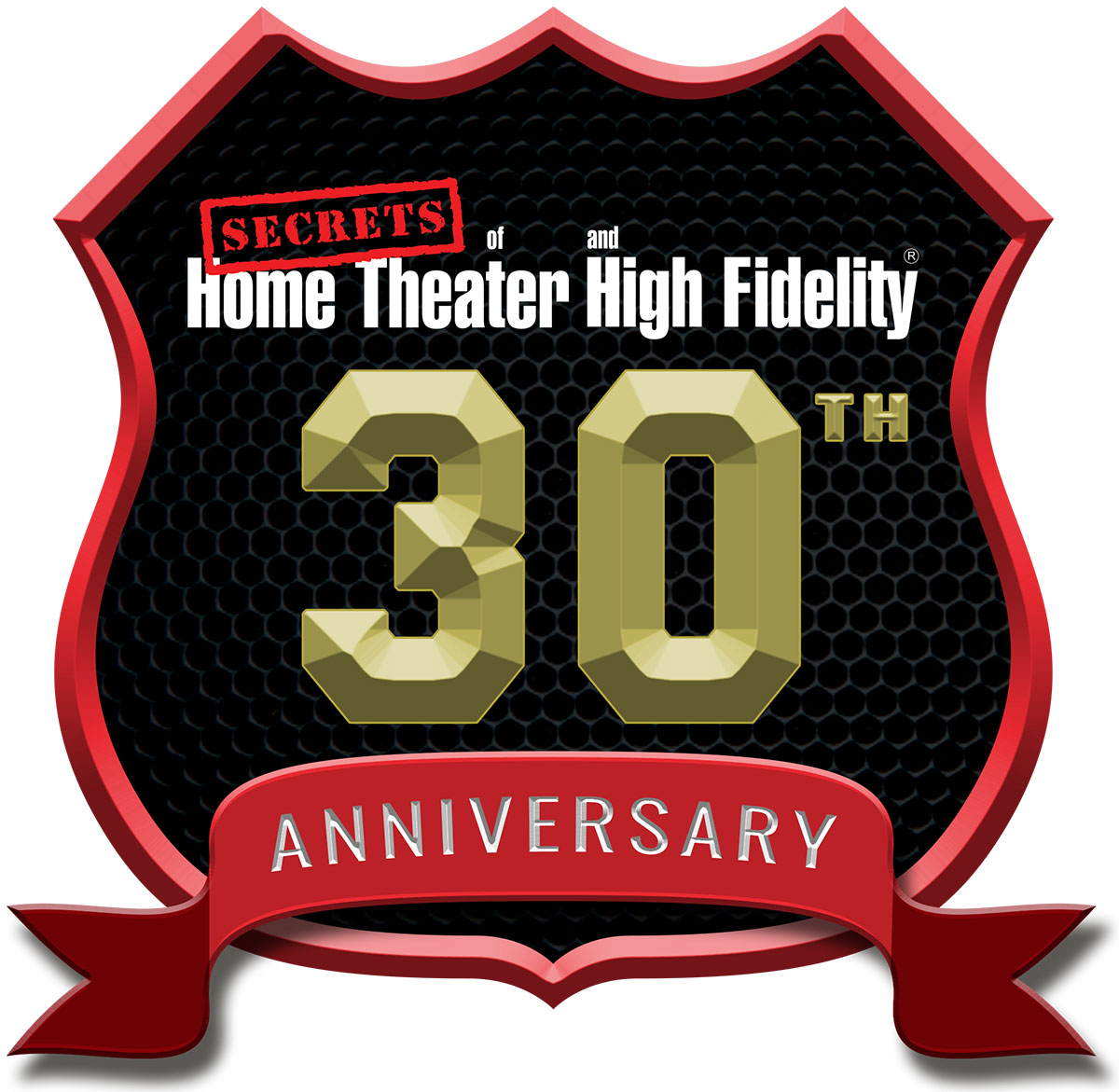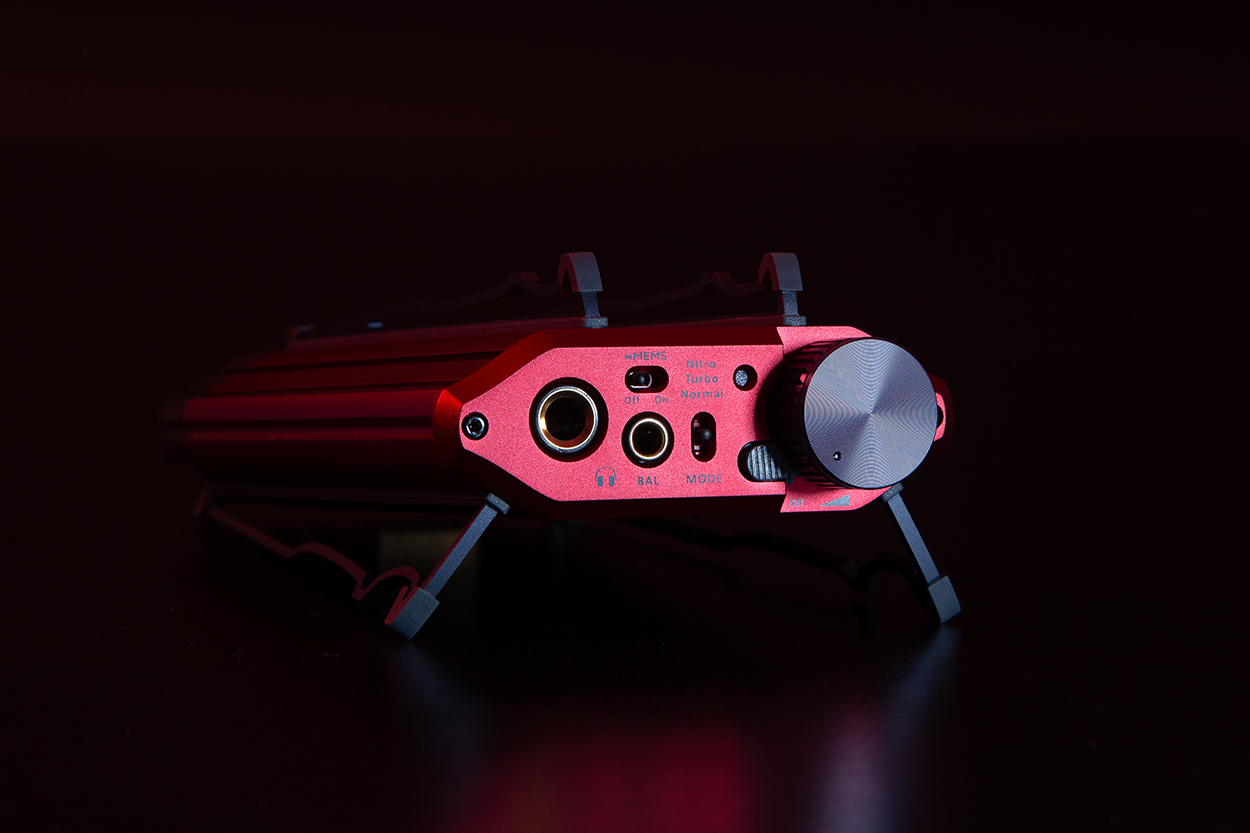It was heavy and large. Once opened, the DAC inside was beautiful. And, as I found out when listening, a terrific piece of equipment for either a desktop or for travel.
I wasn’t quite prepared for the Diablo 2. A lot of thought went into this product. It’s the best build quality I’ve seen in a DAC/Amp, and the sound was first-rate with a variety of headphones of different designs, everything from on-ear to over-ear to IEMs.
iFi Audio iDSD Diablo 2 Portable DAC/Amp Highlights
- Enough power for any headphones available.
- Expensive, but looks it and performs like expensive gear.
- A variety of connections and adaptors to work with just about anything.
- Supports Bluetooth 5.4 and aptX Lossless, not something you find on many competitors.
- Supports many codecs, including DSD and PCM support at sample rates up to 768kHz, DSD512, and Full MQA decoding.
So, you have great headphones, but how to drive them? Yes, there’s the always available headphone output on your receiver/processor/amplifier, but all too often these are kind of average add-ons and not something that provides the highest quality output.
If you’re traveling, even with a high-quality portable digital player the output is likely to be ‘just good enough’. Laptops suffer from the same issue. Their headphone outputs are usually not the best and the supporting audio circuitry is often second-class.
In recent years, high-end companies have been offering DAC/Amps that can take the raw signal from your device and give you near-faultless sound. The only downside for travelers is you are carrying another box and some cables.
iFi Audio has been around since 2012. It’s a company filled with music lovers, and they now have produced more than 50 products including headphones, speakers, portable audio devices, and for the UK, European, and Far East markets, phones, and TVs.
Digital:
Hi-res support
768kHz
DSD512
full MQA
Bluetooth formats:
aptX Lossless
aptX Adaptive
aptX
LDAC
LHDC/HWA
AAC
SBC
Output:
4.4mm
6.3mm
4.4mm
>19.2V/611mW (@600Ω);
>12.87V/5180mW (@32Ω)
6.3mm
>9.6V/153mW (@600Ω);
>8.85V/2450mW (@32Ω)
xMEMS
>28Vpp (4.4mm output)
RMS output power:
4.4mm
>19.2V/611mW (@600Ω);
>7.4/1710mW (@32Ω);
>11.5/2060mW (@64Ω)
6.3mm
>9.6V/150mW (@600Ω);
>8.1V/2050mW (@32Ω);
>9.3V/1360mW (@64Ω)
Output impedance:
≤200Ω
SNR:
≥114dB(A)
DNR:
≥114dB(A)
THD+N:
0.002% @ 0dBFS 200kΩ
Power consumption:
Nitro 12W
Turbo 5W
Normal 2W
xMEMS 8W
Battery:
Lithium-polymer 4800mAh
Charging:
Via USB-C – BC v1.2 compliant up to 1900mA
Dimensions:
166 x 85 x 28.5mm
Net weight:
455g (1.0Ibs.)
Connectivity:
Digital inputs
1x USB-C; 1x S/PDIF (optical/coaxial)
Headphone outputs:
1x balanced 4.4mm
1x 6.3mm
Line output:
1x balanced 4.4mm
Power/charging:
1x USB-C
Accessories:
iPower 2 power supply, a USB-C cable, a USB-C-to-A adapter, a TOSLINK optical adapter, a 3.5mm to 6.3mm headphone adapter, and an iTraveller carrying case.
U.S. Retail Price:
$1299.00
Company:
SECRETS Tags:
DAC, amplifier, headphone amplifier, portable DAC/Amp
Secrets Sponsor
The Diablo 2 is a showstopper in terms of looks. It’s made of red, extruded metal with cooling fins. The controls are on the front, with a variety of inputs to the rear. Headphone outputs are on the front.
For travel, the Diablo 2 comes with a nice cloth carry case. For desktop use, there are a pair of slide-on feet to elevate the front panel. Originally, I thought the feet were missing, but they were in the carry case.
Shipped with the Diablo 2 are a complete set of adaptors that should allow you to avoid the ‘damn, I don’t have an adaptor with me to make my headphones work with a 1/4” jack’ problem. Included in the box are a USB-C cable, a USB-C-to-A adapter, a TOSLINK optical adapter, a 3.5mm to 6.3mm headphone adapter, and the above-mentioned iTraveller carrying case.
The controls are solid. The analog volume control feels like it’s on a very expensive hi-fi component. (Truth is, this is a very expensive component, but portable electronics usually skimp. The Diablo 2 doesn’t).
The Diablo 2 supports xMEMS solid-state micro-speaker technology, enhancing IEM and headphone performance and offering some unique benefits like fast response time on IEM drivers, flat response for these difficult-to-drive headphones, and enough voltage to drive difficult loads.
The Diablo 2 also excels at Bluetooth transmission, supporting the new aptX Lossless codec. The Diablo 2 used Qualcomm’s new QCC518x Bluetooth audio chip, is qualified for Bluetooth 5.4, and supports Bluetooth formats including aptX Lossless, aptX Adaptive, aptX, LDACTM, LHDC/HWA, AAC, and SBC.
The Diablo 2 runs on a Dual Core Burr Brown chipset providing Bit-Perfect DSD and PCM support at sample rates up to 768kHz, DSD512, and Full MQA decoding.
Another nice feature is a lock switch for the volume control, very nice in a DAC/Amp designed for portable use. That volume control won’t get moved in transit.
For a portable DAC/Amp the Diablo 2 has an excellent assortment of I/O. The front panel sports an unbalanced 6.35mm input, a balanced 4.4mm xMEMS output an xMEMS on/off switch, a power mode switch (which increases amplifier output to match a variety of headphones), the analog volume control with lock button, and an LED which can display the audio format of the input, or in Bluetooth mode, the Bluetooth format.
To be a true portable, the Diablo 2 can run on AC power, or when charged, in battery mode. Battery life can be up to 8 hours, depending on the headphone type and how the amplifier power on the Diablo 2 is set.
On the back panel, we get a Bluetooth selector button also used for pairing. There’s a balanced 4.4mm line and output jack, a S/PDIF 3.5mm coaxial/optical input, a USB-C 5V charging input, and a battery status LED, which seems better suited to the front panel than the back.
MQA format music files are supported through the USB with full decoding of MQA files up to 384kHz. That may be of lesser importance than when this device was planned, with the MQA intellectual property sold off. The system was launched in 2014 by Meridian Audio and is now owned by Lenbrook.
For more details on the many technologies built into this compact DAC/Amp, I’d advise you to get a look at the iFi Audio site.
The Diablo 2 is nicely packed in a box with a very well-designed and easy-to-understand quick setup card. It also contains a link to a video with more details on setting the Diablo 2 up, but frankly, the included card is quite complete.
All the buyer needs to do is plug the Diablo 2 in with the included power cord, decide what the audio source will be, and choose your headphones.
I found the setup process clearer than most DACS I’ve looked at, so kudos to iFi for getting this important step done so nicely.
I wanted to hear the Diablo 2 against some other DACS, so got my FiiO R7 up and running, and my MacBook Pro using a USB-C connection to the Diablo 2. Both were connected to my Roon System, so I was feeding pure digital files to both devices. For headphones I listened to some Sennheiser HD 650 over-ear headphones, Apple AirPod Max headphones (no AptX available from Apple), and my reference headphones, Focal Clear MG over-ear headphones. Most of my listening was on the Focals.
For an alternate source I plugged into the USB output of a Shanling ET3 CD transport, but for most of my review, I used some Roon playlists of my digital files that I think will reveal the best and the worst of DAC reproduction. I also plugged the analog out of my FiiO M15 portable DAP into the analog input of the Diablo to use just the amp portion. The M15 can also be used as a Roon endpoint so I had the same music on all these devices.
Of course, there are complicating factors in deciding how something sounds because there are multiple components in the chain. There’s the source, (usually Roon playback in my testing) and multiple headphones. For my serious comparisons, Roon supplied the digital signal for both devices (FiiO R7 and the Diablo 2) and I used the Focal headphones for most of my testing. That left the DACs as the variable.
What I listened to:

Graham Ross, Choir of Clare College Cambridge, Carolyn Sampson, The Dmitri Ensemble, “ICE LAND: The Eternal Music”
Iceland: The Eternal Music – This is a wonderful CD musically and sonically. It has a full orchestra, and a chorus, and is one of my best test discs. It has deep bass, a chance to see how the orchestral image is rendered, and a chorus which gives me an idea of how the human voice is reproduced. I thought playback through the Diablo 2 output from my Mac laptop was superb since the digital files bypass the Mac audio system. Imaging was solid, and music emerged from a completely silent background, even at high playback levels, The FiiO was very close, but there was just a hint of electronic noise at the highest levels. The Burr-Brown chip in the Diablo 2 has been very natural in other components I’ve auditioned over the years, and it was natural sounding with a very slight elevation of the high frequencies, which was to my liking. It was obvious with the chorus in this selection and the violins.

Sonny Rollins, “Go West!: The Contemporary Records Albums”
Sonny Rollins: Way Out West – A 1957 recording but still great. Wonderful separation in this analog recording remastered for digital playback at 192kHz 24-bit. The Diablo 2 gave a realistic presentation of the ensemble. There was very slight tape hiss from the original recording, but the Diablo 2 did not add to it with its own noise. Separation was terrific, and I’m sure the iFi dual mono design helped here. Frankly, the FiiO also sounded quite good, but I thought the Diablo 2 beat it just slightly on the high frequencies.

Symphonieorchester des Bayerischen Rundfunks, Mariss Jansons, “Schostakowitsch: Symphonie Nr.7 Leningrader”
Shostakovich Symphony No. 7 – Mariss Jansons conducts in this musically challenging piece. It’s a lovely recording from BR Klassik. What I listened for was dynamic range, and the Diablo 2 was excellent there.

Norah Jones, “Come Way with Me”
Norah Jones: Come Way with Me – A classic, well-recorded vocal album with instrumental contributions from some notable musicians on guitar, organ, and percussion. The album is a great test of vocals, some deep bass, and percussion. The Diablo 2 sounded good. It was as good as I’ve ever heard these tracks, with the FiiO just slightly behind.
Secrets Sponsor
The Diablo 2 is not a cheap little portable DAC/Amp. It’s a high-precision component, with superb build quality and electronics. It’s a first-class AC-powered DAC/Amp for an office or other listening venue, but you can take it on the road for no-compromise audio. The support of aptX Lossless is quite unique, but there are not a lot of source devices that have it. Nothing from Apple does. There are a couple of Samsung phones that do offer it.
- Build quality is first-rate.
- The rails that allow you to adjust its height and angle are a clever touch.
- Documentation and ease of setup were well thought out and better than most comparable products.
- The sound quality was excellent. Wide frequency response, excellent dynamic range, and no added noise are all plusses.
- USB-C connections are a plus. USB-A is out of date, and the Diablo 2 doesn’t use them.
- The ability to adapt to and drive just about any headphone or IEM is a high-value feature not shared by most competitors.
- Battery LED should be on the front panel.
- Gets warm with extended use on the battery when not on the rails.
- Should not use the peak power output figure in any promotion material.
I think for the feature set, power output, and sound quality the price is not too high. When you throw in its ability to travel, which most comparable DAC/Amps don’t offer, the iDSD Diablo 2 is a first-class, desirable component, especially for those who want to take it on the road.
The Diablo 2 is not inexpensive, but it is a high-end piece of equipment that has the added virtue of being able to go with you. It weighs a pound, and it’s pretty large for a portable DAC/Amp. You won’t be slipping it in your pocket, but as something that you can connect to a portable DAP or a laptop, you’re going to have excellent sound on the road. Battery life was good. I was averaging more than 6 hours over 8 days of listening.
A word about the Diablo 2 power controversy
When the Diablo 2 came out it was advertised as having 5 watts output. That’s quite a lot for a portable amp, and as it turned out, that 5 watts was really a peak power measurement, not an RMS or continuous power measurement as most users were expecting. iFi says it has learned from the storm of negative press coverage, and now states the RMS power of the unit. Consumers can expect 1-3 watts of continuous power, and I do think the initial spec was misleading. Still, the box for the Diablo 2 features “up to 5,180 mW output” which could confuse some buyers. The company would do itself a favor and drop any reference to peak power.
Having said all that, the Diablo 2 has more power than any portable DAC/Amp I’ve heard, and it played effortlessly with a variety of efficient and inefficient headphones.










